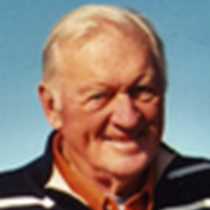Clarkston, WA and Lewiston, ID
Ripe Fall colors surrounded the Sea Lion at the junction of the Clearwater and Snake Rivers. The excursions – one by jet boat into Hells Canyon; the other by motor coach on the path of Lewis & Clark – were blessed with blue skies, brisk air and circling Golden Eagles.
The land and water trails of Lewis & Clark, with local guide Lin Laughy providing narration, was determined by passages from the Lewis & Clark Journals. Guests literally walked on likely Corps sites and saw rolling hills, creek mouths, basalt walls, and shimmering waters that the Corps witnessed 200 years ago – 1805-1806. Most guests had read or dipped into the pages of prize-winning books by Stephen Ambrose (Undaunted Courage) or James Ronda (Lewis & Clark Among the Indians) so the overall story was familiar. However, details of the Corps’ transit across the Clearwater or along ridges of the Bitterroot foothills brought the experience to life. Meetings, negotiations and occasional misunderstandings between the Corps and Native peoples provided ample fodder for discussion.
Simultaneously, a full jet boat headed south on the Snake River into the lower reaches of Hells Canyon. The boat managed to swerve and roll safely around outcropping rocks, stop for photo opportunities at ancient petraglyphs, and coast over Buffalo Eddy which boasts a depth of 125 feet. Besides the raw geology at hand, Golden Eagles, Big Horn Sheep and Blue Heron accompanied guests on their meander into the edge of America’s deepest canyon. While enjoying spectacular deciduous trees, with their orange, red and yellow tints, the jet boat captain provided commentary on the canyon’s geology. Although ancient lava flows – now called basalt – dominated sculptured rock formations, traces of limestone, granite and other “foreign” rocks confirmed that this area was once part of a deep, distant sea.
Both excursions met in late afternoon at the Nez Perce National Historical Park, Spalding, Idaho. The Nimiipuu, familiarly known as the Nez Perce (French fur trapper’s moniker for “pierced nose”), remind visitors of their history and future with the statement: “The way we are taught is that we are part of Mother Earth. We’re brothers and sisters to the animals, we’re living in harmony with them. From the birds to the fish to the smallest insect.” An early chapter in the Nez Perce story is illustrated by mythical sites of the Ant and Yellowjacket (Spalding) and Heart of the Monster (Kamiah). A later event of note is illustrated by remains of the Henry and Eliza Spalding mission below the Nez Perce Park headquarters. And visitors cannot leave without absorbing details about the dramatic and tragic 1877 Chief Joseph trek and surrender.
Ripe Fall colors surrounded the Sea Lion at the junction of the Clearwater and Snake Rivers. The excursions – one by jet boat into Hells Canyon; the other by motor coach on the path of Lewis & Clark – were blessed with blue skies, brisk air and circling Golden Eagles.
The land and water trails of Lewis & Clark, with local guide Lin Laughy providing narration, was determined by passages from the Lewis & Clark Journals. Guests literally walked on likely Corps sites and saw rolling hills, creek mouths, basalt walls, and shimmering waters that the Corps witnessed 200 years ago – 1805-1806. Most guests had read or dipped into the pages of prize-winning books by Stephen Ambrose (Undaunted Courage) or James Ronda (Lewis & Clark Among the Indians) so the overall story was familiar. However, details of the Corps’ transit across the Clearwater or along ridges of the Bitterroot foothills brought the experience to life. Meetings, negotiations and occasional misunderstandings between the Corps and Native peoples provided ample fodder for discussion.
Simultaneously, a full jet boat headed south on the Snake River into the lower reaches of Hells Canyon. The boat managed to swerve and roll safely around outcropping rocks, stop for photo opportunities at ancient petraglyphs, and coast over Buffalo Eddy which boasts a depth of 125 feet. Besides the raw geology at hand, Golden Eagles, Big Horn Sheep and Blue Heron accompanied guests on their meander into the edge of America’s deepest canyon. While enjoying spectacular deciduous trees, with their orange, red and yellow tints, the jet boat captain provided commentary on the canyon’s geology. Although ancient lava flows – now called basalt – dominated sculptured rock formations, traces of limestone, granite and other “foreign” rocks confirmed that this area was once part of a deep, distant sea.
Both excursions met in late afternoon at the Nez Perce National Historical Park, Spalding, Idaho. The Nimiipuu, familiarly known as the Nez Perce (French fur trapper’s moniker for “pierced nose”), remind visitors of their history and future with the statement: “The way we are taught is that we are part of Mother Earth. We’re brothers and sisters to the animals, we’re living in harmony with them. From the birds to the fish to the smallest insect.” An early chapter in the Nez Perce story is illustrated by mythical sites of the Ant and Yellowjacket (Spalding) and Heart of the Monster (Kamiah). A later event of note is illustrated by remains of the Henry and Eliza Spalding mission below the Nez Perce Park headquarters. And visitors cannot leave without absorbing details about the dramatic and tragic 1877 Chief Joseph trek and surrender.




